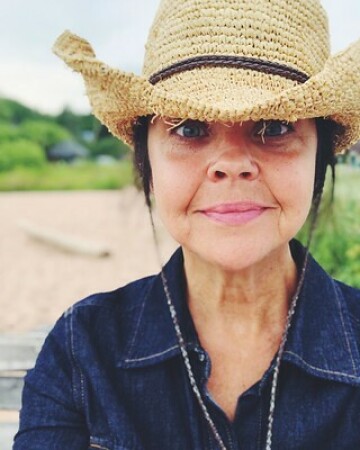
Leo Killsback, associate professor in Montana State University’s Department of Native American Studies, has won the 2021 Stubbendieck Great Plains Distinguished Book Prize for his two-volume history of the Cheyenne Nation.
Awarded by the Center for Great Plains Studies at the University of Nebraska-Lincoln, the prize recognizes Killsback's “A Sacred People: Indigenous Governance, Traditional Leadership and the Warriors of the Cheyenne Nation” and “A Sovereign People: Indigenous Nationhood, Traditional Law and the Covenants of the Cheyenne Nation.” Both books were published by Texas Tech University Press in 2020.
The Stubbendieck award carries a cash prize of $10,000. Killsback also has been invited to the University of Nebraska–Lincoln this fall to lecture on the books’ topics.
Killsback specializes in research about Indigenous governance, traditional law, sovereignty and treaty rights. An enrolled member of the Northern Cheyenne Tribe, Killsback grew up in Busby on the Northern Cheyenne Indian Reservation. He graduated from MSU in 2003 and returned to MSU in 2020 from Arizona State University, where he held an academic appointment from 2010 to 2020, earning tenure and promotion to associate professor.
The Center for Great Plains Studies said the prize “celebrates the most outstanding work about the Great Plains” during the past year as chosen by an independent group of scholars.
“This is a humbling, ennobling work — grounded in the indivisibility of the Cheyenne Nation and the Great Plains,” said book prize committee chair Patty Simpson, professor of modern languages at the University of Nebraska–Lincoln. Simpson also formerly taught at MSU. “Killsback’s work disseminates a growing sense of urgency about the academic and activist dimensions of Indigenous scholarship and the imperative to understand in a new way the significance of the very ground beneath our feet. We congratulate him on this achievement.”
Henrietta Mann, a noted Indian scholar, as well as professor emeritus in Native American Studies at MSU and the first Endowed Chair of Native American Studies at MSU, commended Killsback’s work as significant in its contribution to the continuum of Cheyenne history. Mann is an elder of the Cheyenne and Arapaho Tribes of Oklahoma.
“Dr. Killsback’s two-volume book is an answer to the Cheyenne ancestral vision that wanted their descendants to live harmoniously with time and to carry their sacred and secular history in both their hearts and minds,” Mann said. “Further, as keepers of ancestral wisdom, today’s scholars are expected to teach the forthcoming generations, a task Dr. Leo Killsback has fulfilled in his two books that transmit the Cheyenne Nation’s walk through time from an oral tradition to a written format. As but one of the Cheyenne people’s elders, I am delighted his scholarship has resulted in a prestigious award, celebrating his melding of the older with the contemporary, thus, accomplishing a commendable task.”
Killsback said he was honored to be selected for the prize because it is important that Indigenous histories, experiences and voices are recognized as new horizons in scholarship are reached in Great Plains and Native American studies.
“As an Indigenous scholar, I will continue to contribute research and scholarship that is meaningful and significant to both Indigenous and non-Indigenous peoples,” he said.
Killsback has spent nearly a decade conducting research and adapting his doctoral dissertation into the books. He combed archives at the Smithsonian Institution in Washington, D.C., and the National Anthropological Archives in Maryland. He also interviewed and collaborated with more than 80 elders, teachers and spiritual leaders for the books.
Killsback said the titles of the books were selected to highlight two aspects of the Cheyenne people: their spirituality and their sovereignty. However, Killsback said, “the purpose of the books serves to preserve the Cheyenne culture and ways of life, should they befall any more catastrophes beyond colonization and policies of forced assimilation.”
Killsback said he didn’t know how timely the books would be when he began. In the past two years, many friends and members of his community died during the pandemic.
“I wanted to write something in case our people and culture were threatened again, not thinking that we would face threats at this juncture of time,” Killsback said. “I also wanted to contribute something that all Native people could benefit from, learn from and keep our traditions and philosophies alive while trying to reinvigorate and revive them.
“We go to our (Cheyenne) traditions in times of need and pain and in times of healing. Most certainly now (at the end of the pandemic) is a time of healing.”
Killsback said the impact of the epidemic on his community motivated him to start Society of War Dancers, a nonprofit. He worked closely with Bozeman-based Hopa Mountain to provide COVID-19 relief to the Northern Cheyenne community in the form of face masks, vitamin C and other supplies.
Killsback said that while he had searched for a publisher for the book project since 2012, he has been interested in issues of American Indian sovereignty for even longer, reaching back to his years as a student at MSU. Prior to his graduation in 2003, he won a Rockefeller Brothers Fellowship for Minorities Entering the Teaching Profession. A paper he submitted to Brett Walker, MSU Regents Professor of history, on cultural perceptions of non-Indians as well as Indians toward animals was presented to a Future Indigenous Voices Conference. Killsback said he considered attending law school, but instead he chose to pursue academia.
“I decided we need more Native scholars who can conduct research and contribute directly to their communities and to Native people,” he said. He attended the University of Arizona, where he received his master’s degree and doctorate in American Indian Studies.
While in Arizona Killsback met his wife, fellow Native scholar Cheryl Bennett of the Navajo and Comanche nations. Bennett researches jurisdictional issues, sovereignty and hate crimes in Indian Country. Both professors moved to MSU’s Department of Native American Studies in the College of Letters and Science in fall of 2020. Killsback said he wanted to be near the Northern Cheyenne community where he remains active ceremonially and socially, and where he continues to be involved in the preservation and resurgence of Cheyenne language and culture.
“I also want to help expand and help advance the discipline of Native American studies, scholarship, teaching and service, especially in Montana,” he said.
Killsback said while the two award-winning volumes are his first books, they will not be his last. He is under contract with the University of Nebraska Press to write two more books about the Cheyenne oral tradition and stories. He plans to write one of the books in the Cheyenne language. In the meantime, he will also be working to advance Native American issues in his and other Native communities from his MSU base.
“My goal is to help reinvigorate our communities and secure a healthy and prosperous future for the generations to come,” Killsback said.
For more information on the award or the Center for Great Plains Studies, click here.











News Comments
Thank you
Open Auditions for Annie
Monday, Sep. 16, 2024
I’m at the Bozeman airport where your painting, “Blowing East” is displayed. It’s absolutely gorgeous! Bravo, Marci!!
The Artists’ Gallery in Bozeman’s Emerson Cultural Center May Exhibits
Sunday, Jun. 30, 2024
This is so typical of a sign in, which we should not have to do to check if we or some one in our party got a permit. I have been working or "creating an account" for 30 minutes and just get the same ...
Smith River permit drawing results available
Sunday, Mar. 10, 2024
I have struggled with this podcast and my own participation therein, the event itself obviously traumatic, but beyond that my inability to reach anyone and convey anything resembling truth. The person ...
Billings, MT Case Becomes True Crime Podcast | 'An Absurd Result'
Marktokarski
Saturday, Jan. 20, 2024